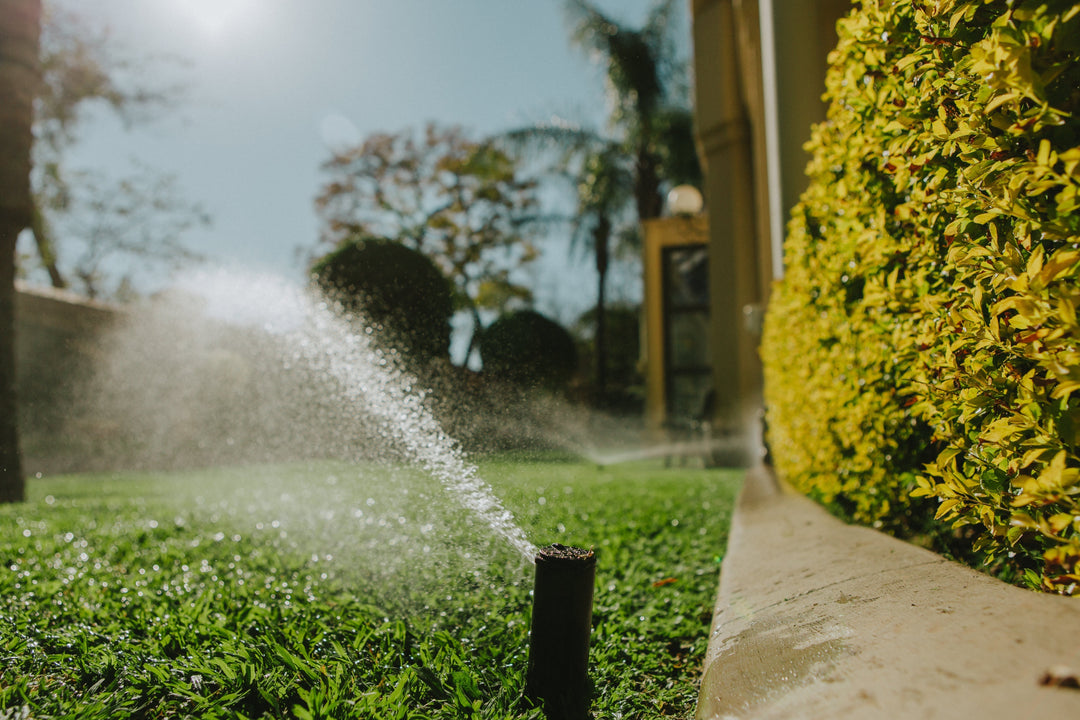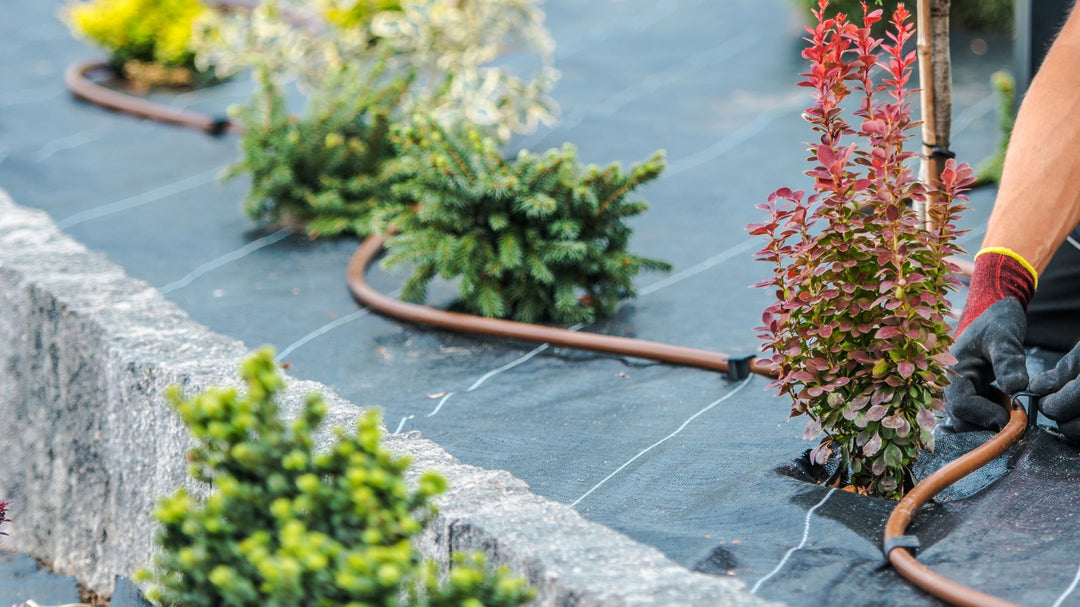What is the downside of using a drip irrigation system

The Truth About Modern Drip Irrigation
Separating outdated myths from today's smart watering solutions
If you've been researching drip irrigation, you might have come across some information about maintenance issues, poor efficiency, and system failures. Many homeowners search for "disadvantages of drip irrigation" or "cons of drip irrigation" because they want to understand what challenges they might face.
While these concerns were valid for older drip systems, modern technology has transformed drip irrigation into a reliable, efficient, and user-friendly watering solution. Let's examine the common misconceptions about drip irrigation and explore how today's systems address these challenges with smart design and quality components.
The Most Common Drip Irrigation Disadvantages (And How to Avoid Them)
Challenge #1: Initial Setup Complexity
The concern: Some people find drip irrigation intimidating because it seems more complex than connecting a sprinkler.
The reality: Modern systems like Orbit's Drip-Lock technology are designed for easy DIY installation. Start with a simple hose faucet connection using the 3-in-1 combo, then expand as you get comfortable with the system. Like Legos for gardeners.
Challenge #2: Clogging from Hard Water or Debris
The concern: Emitters can clog, especially in areas with hard water or high mineral content.
The reality: This is why filtration is crucial. Orbit's 3-in-1 combo includes a 150-mesh stainless steel filter that prevents most clogging issues. For areas with very hard water, consider a water softener or using maintainable pressure-compensating emitters.
Challenge #3: Not Ideal for Large Lawn Areas
The concern: Drip irrigation isn't the best choice for watering large expanses of turf.
The reality: This is actually true - drip irrigation excels at targeted watering for specific plants, trees, shrubs, and garden beds. For lawns, stick with sprinklers. Use drip irrigation for everything else to maximize water efficiency.
Challenge #4: Potential for Uneven Watering
The concern: If not designed properly, some areas might get too much water while others get too little.
The reality: This is why proper system design matters. Use multiple emitters for larger plants, choose the right flow rates for different plant needs, and ensure proper pressure regulation with Orbit pressure regulators.
Honest Assessment: When Drip Irrigation Might Not Be Right
Large lawns: Stick with sprinkler systems for turf areas.
Extremely hard water: May require additional filtration and more frequent maintenance.
Very cold climates: Requires more thorough winterization in areas with hard freezes.
Maintenance: From High-Touch to Set-and-Forget
The Old Reality: Constant Monitoring Required
Traditional drip systems earned their reputation for high maintenance due to several design flaws as the technology was maturing:
- Incompatible parts between manufacturers made repairs difficult
- Poor filtration led to frequent clogs
- Cheap materials degraded quickly in sun and weather
- Systems were difficult to modify once installed
Today's Solution: Smart Design Reduces Maintenance
Modern drip irrigation systems like those using Orbit's Drip-Lock technology address these issues directly:
- Universal compatibility: Drip-Lock fittings work with tubing from Orbit, Hydro-Rain, and other major brands
- Built-in removal collar: Easy reconfiguration and seasonal storage without tools
- Integrated filtration: The 3-in-1 combo includes a 150-mesh stainless steel filter
- Quality materials: Stainless steel teeth and special O-rings ensure long-lasting connections
Real-World Maintenance Requirements
With properly designed modern systems, maintenance involves simple seasonal tasks:
Seasonal Maintenance Checklist (15 minutes, twice per year)
Spring startup: Remove end caps, flush lines for 30 seconds, replace caps, check for any winter damage.
Fall shutdown: Clean the filter in your 3-in-1 combo, drain lines if needed for freezing climates, store removable components.
Monthly during season: Quick visual check for proper water flow at emitters.
Efficiency: Precision Water Delivery That Actually Works
The Misconception: Poor Coverage and Uneven Distribution
Critics often point to studies showing low uniformity in drip systems, but this typically results from:
- Improper system design for the application
- Lack of pressure regulation
- Using the wrong emitter types for different plants
- Poor installation practices
Water savings compared to traditional sprinklers when properly installed
The Solution: Right Tool for Each Job
Modern drip irrigation offers specialized components for every landscape need:
For Trees & Shrubs:
- Flag drippers (2-4 GPH) for deep root watering
- Multiple emitters per plant for even coverage
- Pressure-compensating drippers for consistent flow
For Flower Beds & Ground Cover:
- In-line drippers or Low-volume sprinklers for area coverage
- 0.5, 1, 2, and 4 GPH emitters
- Quarter, half, and full-circle patterns
- Use adjustable flow rates for different plant needs
Addressing Plant Health Concerns
One criticism suggests drip irrigation creates shallow root systems. This is only true when systems are improperly designed or scheduled. Here's how to promote deep, healthy roots:
Smart Watering Schedule
Deep, infrequent watering encourages roots to grow down rather than stay shallow. Use your B-hyve smart controller to water less frequently but for longer durations. For example, instead of watering 15 minutes daily, water for 45 minutes every three days (or more).
Durability and Appearance: Modern Systems Built to Last
Past Problems: Vulnerability and Poor Aesthetics
- Brittle tubing that cracked in sun or cold
- Systems that couldn't be moved or modified
- Unsightly black tubing running everywhere
- Easy targets for lawn mowers, pets, and foot traffic
Today's Approach: Strategic Placement and Quality Materials
- UV-resistant materials: Modern tubing withstands years of sun exposure
- Strategic placement: Run main lines along fence lines, under mulch, or behind plantings
- Protective accessories: Tube straps and stakes keep lines in place and visible
- Seasonal flexibility: Easy removal for lawn care or landscape changes
Professional Installation Tips for Homeowners
The key to an attractive, durable drip system is thoughtful planning:
Layout Best Practices
Plan your zones: Group plants with similar water needs together. Use manifolds to distribute water from a single connection point. Mix and match 0.5, 1, 2, or 4 GPH emitters with different plants
Hide main lines: Run ½" distribution tubing along edges of beds, behind plants, or under mulch where it won't be seen or disturbed.
Protect connections: Use the tube stakes and straps to secure tubing away from foot traffic.
Think seasonal: Plan for easy access to end caps for flushing and consider which components you might want to remove for winter storage.
Installation: Simpler Than You Think
Modern drip irrigation installation has become dramatically easier, especially for homeowners who want to start small and expand over time.
Three Ways to Get Started
1. Hose Faucet Connection (Easiest)
Perfect for container plants, small garden areas, or testing drip irrigation before committing to a larger system. The 3-in-1 combo connects directly to any hose faucet and includes everything needed: pressure regulation, filtration, and the drip adapter.
2. Retrofit Existing Sprinklers
Replace inefficient spray heads with drip manifolds. This approach uses your existing irrigation zones and timing but delivers water more precisely where plants need it.
3. Dedicated Drip Zones
For new installations or major landscape renovations, dedicated drip zones offer the most flexibility and efficiency. Use Orbit's 4-in-1 drip valve for professional results.
Success Factor: Proper Pressure
Always use pressure regulation. Drip systems operate best at 15-35 PSI. Most home water pressure is 40-80 PSI, which can cause system failures, uneven flow, and shortened component life. Orbit's pressure regulators reduce pressure to optimal levels while maintaining adequate flow.
The Real Benefits of Modern Drip Irrigation
When properly designed and installed, modern drip irrigation systems deliver significant advantages:
Water Conservation
- Up to 70% less water use than sprinklers
- No water lost to wind or evaporation
- Precise delivery only where needed
- Reduced runoff and waste
Plant Health
- Consistent soil moisture levels
- Reduced disease from wet foliage
- Less weed competition
- Optimal root zone conditions
Convenience
- Automated with smart controllers
- No hand watering required
- Works while you're away
- Easy seasonal adjustments
Cost Savings
- Lower water bills
- Reduced plant replacement costs
- Minimal ongoing maintenance
- Compatible with existing systems
Weighing the Cons of Drip Irrigation Against the Benefits
Every irrigation method has trade-offs. Here's an honest comparison to help you decide if drip irrigation's advantages outweigh the potential disadvantages for your specific situation:
Potential Disadvantages
- Higher upfront cost than basic sprinklers
- Requires some planning and design
- Not suitable for large lawn areas
- May need filter cleaning in hard water areas
- Can be damaged by garden tools if not protected
Significant Advantages
- Up to 70% water savings
- Dramatically lower water bills
- Healthier plants with targeted watering
- No water waste from wind or evaporation
- Reduced weed growth
- Works automatically while you're away
- Compatible with smart controllers
The Bottom Line on Drip Irrigation Disadvantages
Most perceived disadvantages of drip irrigation stem from older technology or improper installation. Modern systems using Orbit's Drip-Lock technology address the traditional challenges while delivering proven water savings and plant health benefits.
The key is starting with quality components, proper pressure regulation, and realistic expectations about what drip irrigation does best - targeted, efficient watering for specific plants rather than broad area coverage.









